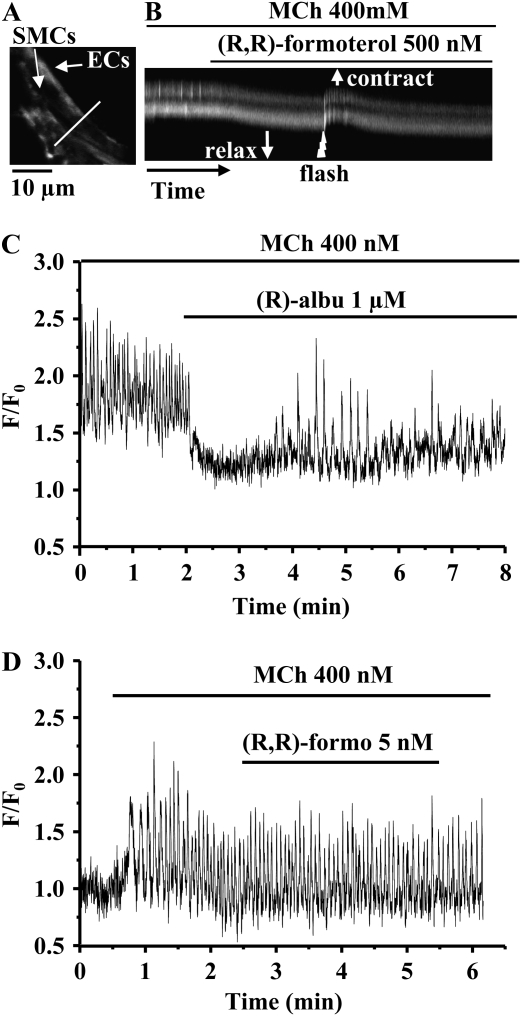Figure 6.
The effect of the photolytic release of IP3 in SMCs exposed to (R,R)-formoterol. (A) Fluorescence image indicating the location of SMCs and ECs from the airway observed. (B) Line scan analysis (for 180 s from the white line indicated in [A]) showing that the rhythmic Ca2+ oscillations in two SMCs induced by 400 nM MCh were inhibited by 500 nM (R,R)-formoterol, and that this allowed the airway to relax. The subsequent flash photolysis (500 ms, jagged arrow) of caged–iso-Ins(1,4,5)P3/PMIP3 (caged-IP3) in presence of MCh and (R,R)-formoterol induced a short period of Ca2+ oscillations. The upward shift of the fluorescence trace indicates the transient contraction of the airway induced by IP3 release from caged-IP3. As the Ca2+ oscillations slowed again, the airway relaxed. (C) Representative experiment showing that Ca2+ oscillations induced in an airway SMC by 400 nM MCh were initially abolished by (R)-albuterol (1 μM), but, after 2 minutes, the Ca2+ oscillations resumed at a lower frequency. (D) Representative experiment showing that the Ca2+ oscillations induced by 400 nM MCh were not affected by 5 nM (R,R)-formoterol.

